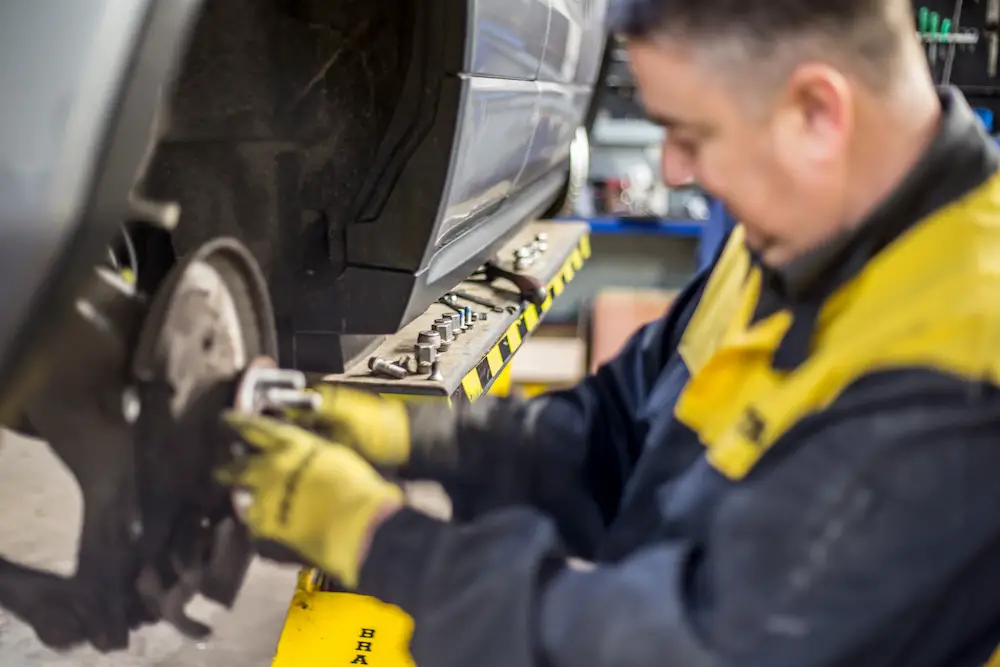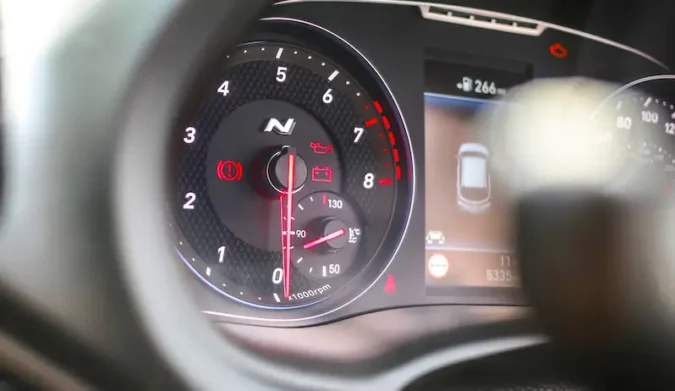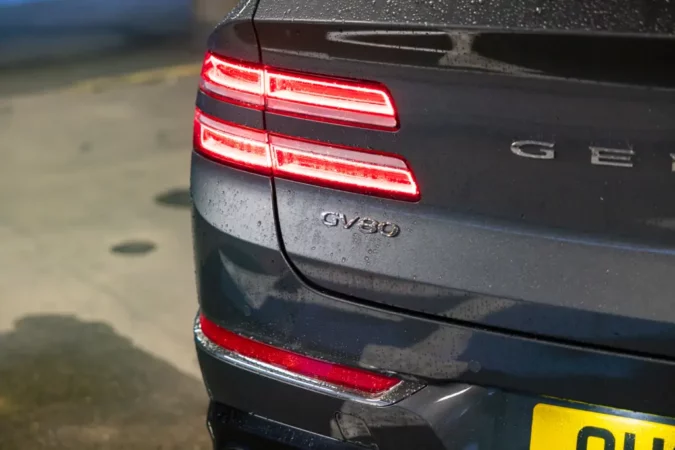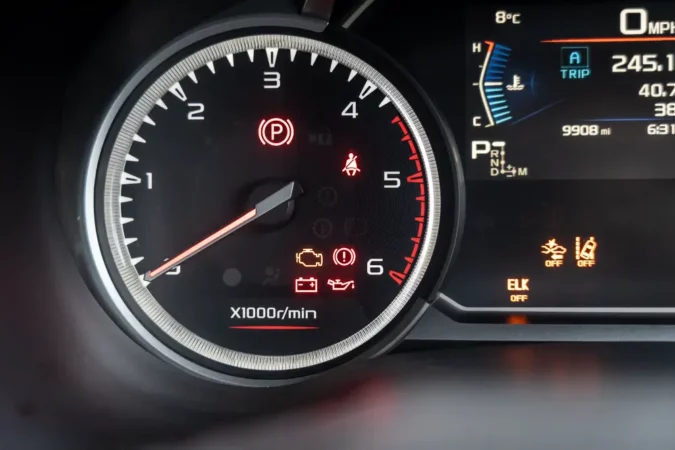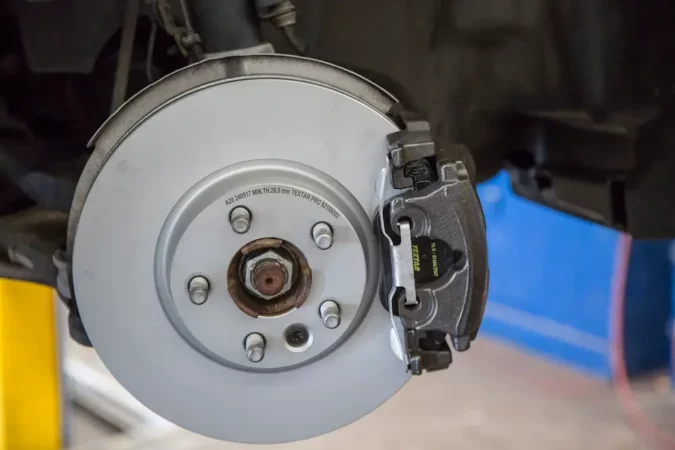It has been more than a century since the automobile was introduced. During this time, safety systems on vehicles have seen a vast improvement. Emergency braking assistance is one such feature. However, issues with this system can cause the “Service brake assist” light on the dashboard to turn on.
Have you been looking forward to learning about this safety feature? Well then, you have come to the right place. In this article, we’ll tell you all about the brake assist feature. Not only that, but we will also tell you some other important details about the braking system.
So, without further ado, let’s get started. As a start, we will take a closer look at the brake assist feature itself.
What Is Brake Assist
The brake assistance feature has been designed to ensure that sufficient pressure is applied on the brake pedal to prevent a collision from taking place. It achieves this with the help of the vehicle’s anti-lock brakes. This feature monitors your regular driving settle and brake application preferences using sensors. As a result, it will kick in immediately once the sensors detect an abnormality.
Brake Assist comes in two varieties – electronic and mechanical. However, only electronic brake assistance is still in use. Although different car manufacturers have different brake assist designs, the basic functionality remains the same. Let us take a brief look at both of these technologies.
1. Mechanical Brake Assist
Mechanical brake assistance was the first type of brake assist technology to be introduced. It is mostly found in vehicles manufactured before 2004. These systems didn’t have any sensors. Instead, they relied on old-school mechanical parameters to aid with braking.
In vehicles equipped with mechanical brake assist, the brake pedal has to be pressed to a pre-determined position before the system engages. Once it does, a locking mechanism directs the braking power to the brake booster instead of the brake piston valve.
2. Electronic Brake Assist
Electronic brake assistance took the seeds planted by the mechanical system to a whole new level. Here, an electronic control unit is used to determine when the brake assist feature should kick in. In order for it to deploy, the driver must press the brake pedal with a specified force and speed.
Furthermore, electronic brake assistance has the ability to adapt to a driver’s braking habits. This allows the system not to interrupt day-to-day driving, and only engage during emergency situations.
Although brake assist and ABS are both braking-related technologies, they are not identical. Anti-lock brakes ensure that the wheels don’t lock up when you press the brake pedal. On the other hand, brake assist provides additional brake pressure during emergency applications.
Otherwise, if you’d like to learn more about ABS (anti-lock brakes), you can also consider checking out our other write-ups below:
- How to bleed the ABS module without a scan tool
- What is the ABS sensor
- What’s the meaning of the ABS light
- Why is my ABS light turned on
Contrary to popular belief, brake assist is not identical to Automatic Emergency Braking either. In order for brake assistance to work, you first have to apply some pressure on the brake pedal. In contrast, cars equipped with Automatic Braking Assistance will apply the brakes automatically for you.
Both systems use data from different sensors for their operation. Where Automatic Emergency Braking is an autonomous technology that comes in high-end vehicles, brake assist can be found on more common and inexpensive models.
Brake Light On Dash
In addition to the “service brake assist” warning, there are some other brake-related warning lights on the dashboard as well (make sure you also understand all the dashboard symbols and their meanings). Here are some common warning lights you might see.
Brake Light On Dash #1 – Brake Hydraulic System Warning Light
If the warning symbol is in the shape of a red exclamation mark or the word “BRAKE” in bright red letters, there is a possible issue in the vehicle’s brake hydraulic system. Typically, this happens when the brake fluid levels are running low.
The amount of brake fluid in the brake master cylinder is evaluated by a sensor. It detects when the fluid levels fall below the minimum point and triggers the warning light intermittently.
On the other hand, if the warning light stays on for long periods of time, there might be some major underlying issues with the vehicle’s braking system. In this case, we recommend you take your vehicle to a mechanic as soon as possible.
Brake Light On Dash #2 – Brake Pad Warning Light
Next up is the brake pad warning light. As the name suggests, this light indicates that the brake pads might be worn out, or that they need to be serviced. The brake pad warning light is in the shape of a red circle surrounded by dashed outer lines. These outer lines are meant to symbolize brake pads.
However, not all cars are equipped with this warning light. Currently, it is only limited to high-end luxury vehicles. But, there are other signs that will indicate you of worn brake pads. If there are squeaking noises when you push on the brake pedal, we recommend you take a look at the brake pads.
Brake Light On Dash #3 – Press Brake Light
In contrast to the other dashboard symbols we discussed, the “Press Brake” light is not a warning light per see. Instead, it can be considered more of an instructional symbol.
Most cars with push-button starters require the driver to press the brake pedal before starting the vehicle. That is when this light will turn on. Additionally, it will also turn on when you go to shift out of Park in vehicles equipped with automatic transmissions.
Brake Light On Dash #4 – Emergency Brake Warning Light
The emergency brake warning is the final brake light symbol we’ll be taking a look at today. It usually takes the shape of a “P” in the middle of a red circle. This light acts as a reminder that the vehicle’s parking brake is currently engaged.
This light is especially useful in vehicles equipped with an electronic parking brake. If this light has turned on with a wrench symbol under it, there might be something wrong with the parking brake.
Now that you know all about the different types of brake lights on the dashboard, let’s shift our attention toward the service brake assist warning.
Service Brake Assist
If you are the proud owner of a vehicle with the brake assist feature, there is the possibility that you may come across this warning light at least once during your ownership. And similar to the other warning lights we discussed, the service brake assist light turns on when there is a malfunction with the brake assist system.
As with other dashboard warning lights, you can locate the exact cause of the issue by plugging in an OBD 2 code reader. Here are 10 of the most common causes of brake assist failure include,
- Sensor Failure
- Faulty Electronic Control Unit
- Brake Booster Issues
- Bad Wiring
- ESC Malfunction (as is the case with the “service ESC” problem on a Chevy Malibu)
- Low Brake Fluid
- Issues With The Electric Vacuum Pump
- Disconnected Vacuum Hoses
- Master Brake Cylinder Failure
- Faulty Warning Light
Shall we take a deep dive into each of these issues?
Service Brake Assist, Causes #1 – Sensor Failure
Electronic brake assistance relies on several sensors to function properly. The exact number of sensors varies depending on the make and model of the vehicle you own. These different sensors measure an array of parameters – including the rotational speed of the wheels, the system’s hydraulic pressure, and the position of the pedals.
The failure of even one of these sensors is enough to trigger the service brake assist warning light. Luckily, replacing most of these sensors is not that difficult. A qualified mechanic should be able to get the job done in no time!
Service Brake Assist, Causes #2 – Faulty Electronic Control Unit
The Electronic Control Unit (ECU) is an integral part of modern vehicles. In the simplest of terms, the ECU acts as the vehicle’s onboard computer. Therefore, it takes care of all its electronic functionalities.
A faulty ECU can lead to the dashboard warning lights turning on without reason. Weak performance, engine misfires, and the vehicle struggling to start are some other symptoms of a faulty ECU.
Service Brake Assist, Causes #3 – Brake Booster Issues
As the name indicates, the main responsibility of the brake boosters is improving (boosting) the braking performance by increasing the system’s hydraulic pressure. It lies between the master cylinder and brake pedal and utilizes the engine vacuum to function. Failure of this component also leads to the service brake assist light turning on.
If the brake booster has failed, you will have a harder time engaging the brakes. Additionally, the vehicle will need to cover a longer distance to come to a stop as well. Not only that, but if the internal seals of the brake booster are damaged, it can damage the master cylinder too.
So, it’s wise to be wary of the symptoms of a bad brake booster system, as well as consider a brake booster replacement if you need to.
Service Brake Assist, Causes #4 – Bad Wiring
Brake assistance relies on a complicated series of wires for communication between the different sensors. Damage to these wires causes interruption to these signals, resulting in the service brake assist warning light turning on.
Service Brake Assist, Causes #5 – ESC Malfunction
The brake assist feature cannot function on its own. Instead, it relies on other systems like Electronic Stability Control (ESC), Traction Control (TC), and Anti-lock Brakes to assist the driver during emergency situations. In fact, these systems even share signals from some sensors among themselves.
Failures in these sensors can also result in the service brake assist light turning on. These can be caused by a variety of reasons, including faulty wiring, a blown fuse, faulty controllers, or damage to the sensors.
Depending on the system that has malfunctioned, there will be other symptoms as well. For example, issues with the Anti-lock brakes will cause the ABS warning light on the dashboard to turn on. Additionally, the wheels may lock up during braking, and there will be a loss of traction too.
Service Brake Assist, Causes #6 – Low Brake Fluid
The reason behind the service brake assist warning symbol might be as simple as running low on brake fluid. This liquid is essential for lubricating the braking components as well as for building hydraulic pressure.
Leaks in the brake lines are the main cause of your vehicle running low on brake fluid. Additionally, contamination of the brake fluid can also cause some issues. In addition to triggering warning lights on the dashboard, brake fluid contamination also carries the risk of corroding the brake components.
Luckily, topping up the brake fluid is not a difficult operation. To do so, first, locate the brake fluid reservoir under your car’s hood. Usually, this is a white container with a black and yellow cap. Next, check whether the brake fluid level is between the minimum and maximum markers. If not, fill it up with the correct marker.
While you are under the hood, pay attention to the color of the brake fluid as well. If it appears black and oily instead of pale yellow, it’s time for a replacement. To learn more about brake fluids, you can check out our other guides below:
- What’s a brake fluid change
- Why is there a brake fluid leak
- Do you need a brake fluid flush
- How much brake fluid do I need
- DOT 3 vs DOT 4 brake fluid
- DOT 5 brake fluid
- How much does a brake fluid flush cost
- Can you use power steering fluid as brake fluid
Service Brake Assist, Causes #7 – Issues With The Electric Vacuum Pump
We already mentioned that the brake assist system uses the vacuum from the engine to carry out its purpose. There is a vacuum pump that circulates this vacuum through the brake booster to apply it to the hydraulic brakes.
Failure of the vacuum pump can hamper the performance of the brake assist feature. As a result, the service light on the dashboard will illuminate (for more context, check out our write-up on how to reset maintenance light on Toyota).
Service Brake Assist, Causes #8 – Disconnected Vacuum Hoses
This ties into the previous point we discussed. The vacuum runs through hoses, and sometimes these can develop leaks. If this happens, you’ll have to swap out the leaking hose for a brand-new one to get the system back up and running again.
Service Brake Assist, Causes #9 – Master Brake Cylinder Failure
The master brake cylinder is one of the most important components of the entire brake system. It controls the brake fluid mechanically through the use of hydraulic pressure. It also creates hydraulic pressure for the brake assist system.
So, when the master cylinder goes bad, there won’t be enough pressure in the braking system. As such, make sure you’re on the lookout for the symptoms of a bad master cylinder and consider the master cylinder replacement cost if need be.
Some symptoms you can use to identify master brake cylinder failure include soft pedal feel, contaminated brake fluid, leaks in the system, and the service brake assist light turning on in the dashboard.
Master brake cylinder failure is not something that should be taken lightly. If left unfixed, this can lead to complete brake failure. A professional mechanic will charge you between $250 – $500 for a master cylinder replacement.
Service Brake Assist, Causes #10 – Faulty Warning Light
If you have found nothing mechanically wrong with the brake assist system, then the issue might lie with the warning light itself. If the light displays some weird behaviors like blinking or intermittently turning on and off, try resetting it.
Most probably, one or more of these reasons is why your service brake assist light is staying on. In any case, taking your vehicle to a mechanic for an inspection is the best course of action you can take.
Can You Drive With Service Brake Assist On
Although you can still drive your vehicle with an illuminated service brake assist warning, we would recommend you against doing so. There are several reasons that make it a bad idea. First, if an emergency arises during your drive, there won’t be any assistance. This can get you into accidents, and we don’t want that to happen, do we?
The other reason why we discourage you from driving with this warning light is that you don’t know the exact cause behind the issue.
For example, if the service brake assist warning has been caused due to an issue with the traction control system (we’ve discussed it before in our overview of what does traction control do), there is a risk of you sliding off the road during adverse conditions. The same goes for ABS issues as well.
Some of you may also be wondering whether you can disable the system entirely. The answer to this question is “No.” As it is an important safety feature that can even save lives on some occasions, manufacturers do not give drivers the ability to turn it off. And if you somehow find a way to do so, they wouldn’t hesitate to void your warranty.
Service Parking Brake
In a perfect world, the parking brake warning light will turn on when you engage it, and turn off after you disengage. But, we don’t live in a perfect world, do we?
Before looking at the common causes that might lead to the parking brake requiring service, let us first look at how this system functions.
The parking brake is designed as a secondary system that will step in if the main brakes encounter a failure. It helps you in those awkward situations where you have to park your vehicle on a steep slope or a hill.
Old school parking brakes are engaged by a handle that is attached to a cable. When you pull it, the cable engages the rear brakes. This brake engagement is sensed by a switch, which turns on the parking brake light on the dashboard.
However, this is not the only situation in which the parking brake warning light may turn on. It can also illuminate when there is a malfunction in the system as well. Nowadays, traditional parking brake handles have largely been replaced by electronic parking brakes. These are engaged by a switch and have no cables physically connecting them to the brakes.
Both mechanical and electronic parking brakes share similar reasons for the parking brake warning light staying on. One of the most common reasons is the driver forgetting to lower the handle completely. In order for the parking brakes to disengage, the handle must be at its lowest position. As long as it isn’t, the warning light will stay on.
Other reasons for the parking brake warning light staying on include faulty switches, uneven brake fluid pressure, broken level sensor, low brake fluid levels, and the parking brake failing to disengage. This is the case when we discussed the electric parking brake problem on Honda Civic models (also, our guide on are Honda Civic reliable), not to mention not knowing how to take off the e-brake.
Final Verdict
As we reach the conclusion of this article, we can safely say that brake assistance has been an invaluable safety feature of modern vehicles. By boosting the brake pressure during emergency situations, brake assist has allowed countless drivers to escape unscathed from what could have been life-threatening situations.
Today, we took a look at several reasons which could lead to your dashboard being illuminated with the “service brake assist” warning. These include low brake fluid levels, brake sensor failure, ESC malfunction, a faulty electronic control unit, and issues with the brake booster. Getting this issue sorted out is really important because you never know when you might need it.
Frequently Asked Questions
Here are some popular FAQs:
Why Is My Brake Light On
There are many reasons why your brake light may have turned on. There can be a fluid leak, issues with the master cylinder, worn brake pads, or an issue with the Electronic Control Unit.
What Does The Brake Light Mean
Different brake warning lights have different meanings. For example, the service brake assist light indicates that there is an issue with the brake assist feature. On the other hand, the brake pad warning light tells you that it is time to invest in some new brake pads.
How To Reset Parking Brake Light
The parking brake light turns on to indicate that you have engaged the system. Lowering the parking brake handle should make it go away on its own. If that isn’t the case, take a look at the brake fluid levels. Sometimes, damaged wiring, a faulty sensor, or ABS issues can lead to this light staying on.
Whats ABS Mean
ABS stands for Anti-lock Brakes System. This technology was first introduced back in 1971. ABS allows drivers to engage the brakes without the risk of the wheels locking up during application.
What Is Brake Assist
Brake assist is a relatively new innovation in the automotive landscape. Vehicles equipped with brake assist monitor the driver’s braking pattern. If it detects something out of the ordinary, extra pressure will be applied to aid the driver to bring the vehicle to a complete stop before disaster strikes.
What Does Service Trailer Brake System Mean
You are bound to come across this warning light if you frequently tow a trailer with your vehicle. It indicates that the trailer brake system has malfunctioned. This can be caused due to several reasons, including wiring issues or inadequate power.

